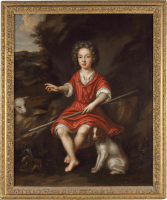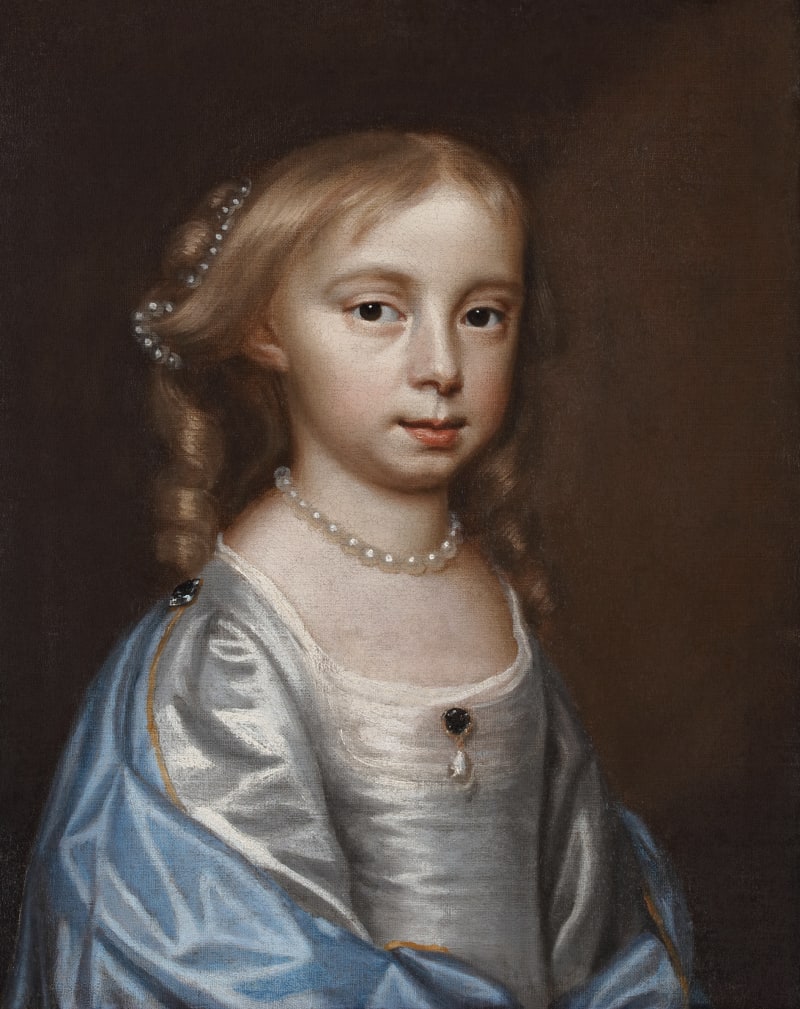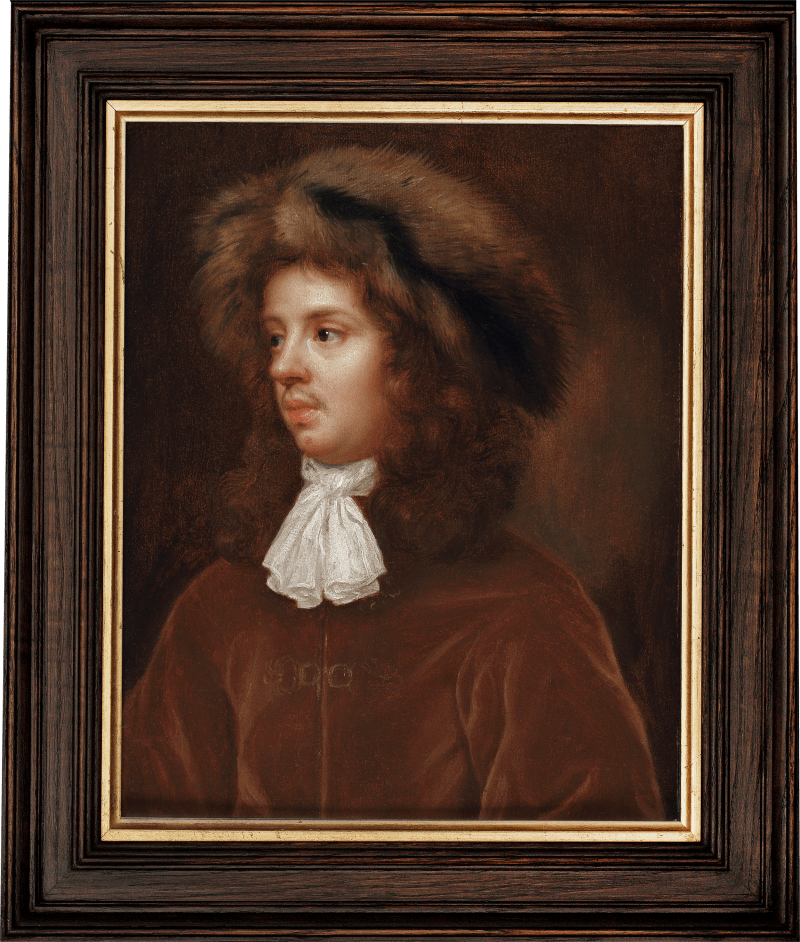The present work is an impressive example of Mary Beale’s full-length child portraiture and an exciting new addition to her oeuvre. For many years, it was erroneously attributed to her male contemporary, Sir Peter Lely (1618-1680).
Although the sitter’s identity is unknown at present, he was evidently part of Beale’s close circle of ecclesiastical patrons. The boy is shown dressed in classical robes and seated in a verdant landscape, gesturing to a steepled church in the distant landscape; the subject is ostensibly secular, albeit one with Christian undertones. During a time heavily influenced by religious beliefs, subtle allusions to faith were frequently incorporated into portraiture. In this instance, the young boy is shown with a lamb and crook, attributes of St John the Baptist, who lived an austere life in the wilderness.
It is impossible to overstate the importance of religion in Beale’s life and its influence on her portraiture. She was born into a well-to-do Puritan household and throughout...
The present work is an impressive example of Mary Beale’s full-length child portraiture and an exciting new addition to her oeuvre. For many years, it was erroneously attributed to her male contemporary, Sir Peter Lely (1618-1680).
Although the sitter’s identity is unknown at present, he was evidently part of Beale’s close circle of ecclesiastical patrons. The boy is shown dressed in classical robes and seated in a verdant landscape, gesturing to a steepled church in the distant landscape; the subject is ostensibly secular, albeit one with Christian undertones. During a time heavily influenced by religious beliefs, subtle allusions to faith were frequently incorporated into portraiture. In this instance, the young boy is shown with a lamb and crook, attributes of St John the Baptist, who lived an austere life in the wilderness.
It is impossible to overstate the importance of religion in Beale’s life and its influence on her portraiture. She was born into a well-to-do Puritan household and throughout her life placed a strong emphasis on human relationships such as friendship, family and community. Beale’s circles of friends included clergymen, intellectuals, and artists, and each year, she paid 10% of her income from each portrait into a ‘Pious and Charitable Account’, which was maintained even when the family was in financial difficulties.[1]
As a woman, to succeed in a profession that required close personal interaction with clients, such as portrait painting, maintaining a reputation for virtue and propriety was essential. Beale’s association with influential members of the church would have aided her navigation of the gendered expectations of her time, providing her with an additional layer of social legitimacy, patronage, and a support network necessary to pursue her career in a socially acceptable manner. This structure proved valuable for Beale, whose association with influential religious figures led to a significant growth in her circle of patronage.
The majority of surviving works by Beale on this scale show a heavy reliance on the compositional designs of her contemporary Sir Peter Lely (1618-1680). Lely was the most celebrated portrait painter of the Restoration period, so his influence is to be expected. The present work, however, shows a freedom of expression seldom seen by Beale on this scale; the composition is ambitious yet not overly ostentatious and is treated with a level of restraint befitting a patron conscious of appearing overindulgent. It is perhaps the case that Beale’s ecclesiastical patrons were less domineering and granted her a wider scope for creative expression, as opposed to her higher-status sitters who wanted the Lely ‘look’ at a Beale price point. The quality of Beale’s output on this scale can vary, however, the present work demonstrates a deft combination of confidence and sensitivity one expects in a work wholly by her hand.
The sitter remains, at present, unidentified, although the portrait is thought to have been passed down by descent in the Hayley family. Dr William Hayley (c. 1657-1715) was a contemporary of Beale and was chaplain to her friend and patron Sir William Trumbull (1636-1716) on his trips to Paris in 1684 and Constantinople in 1686-91. Hayley didn’t marry until 1696, ruling out the possibility that this could portray one of his children, but it is possible that it portrays an as yet unidentified kinsman or a child from his close circle of friends.
[1] H. Draper, ‘Mary Beale (1633-1699) and her ‘paynting roome’ in Restoration London’, 2020, doctoral thesis, University of London, p. 206-7.













